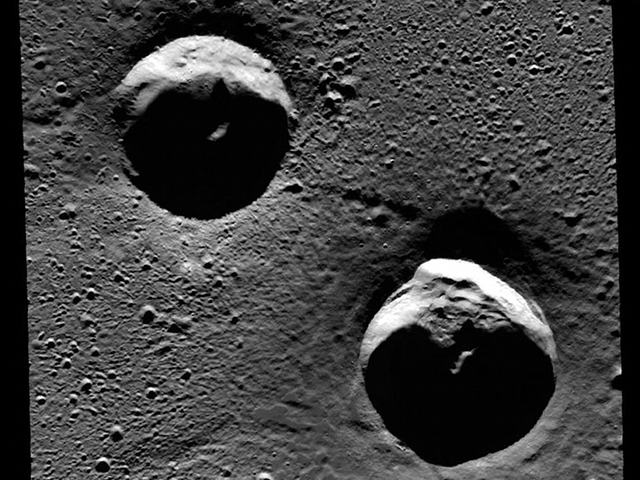Craters on Mercury are oases for water ice, organic molecules
Ars Technica » Scientific Method 2012-11-29

According to our best models for the formation of the Solar System, comets and meteorites bombarded the planets in their early days. This bombardment brought water to Earth, Mars, and the other terrestrial worlds. But Mercury is an airless body and is much closer to the Sun, so its daytime surface temperature reaches 426°C. That's hot enough to make sure that any exposed surface water would have evaporated long ago, along with other volatile substances.
However, a new set of measurements from the MESSENGER probe has revealed the probable presence of water ice in shadowed craters near Mercury's poles. Using laser and radar reflection along with measurements of neutron emissions, MESSENGER scientists found patches of reflective material that alternate with much darker regions than the average planet surface. This data suggests the presence of both ice and complex organic molecules, both of them probably left over from when the Solar System was young.
The presence of water on Mercury had been suspected since as early as 1992, due to Earth-based radar reflection experiments. These measurements were ambiguous enough that more direct observation was desirable. Enter MESSENGER: the MErcury Surface Space ENvironment, GEochemistry, and Ranging probe, which has been orbiting Mercury since 2011. MESSENGER carries a variety of instruments for measuring surface features and magnetic fields, along with more ordinary cameras for imaging.
Read 5 remaining paragraphs | Comments